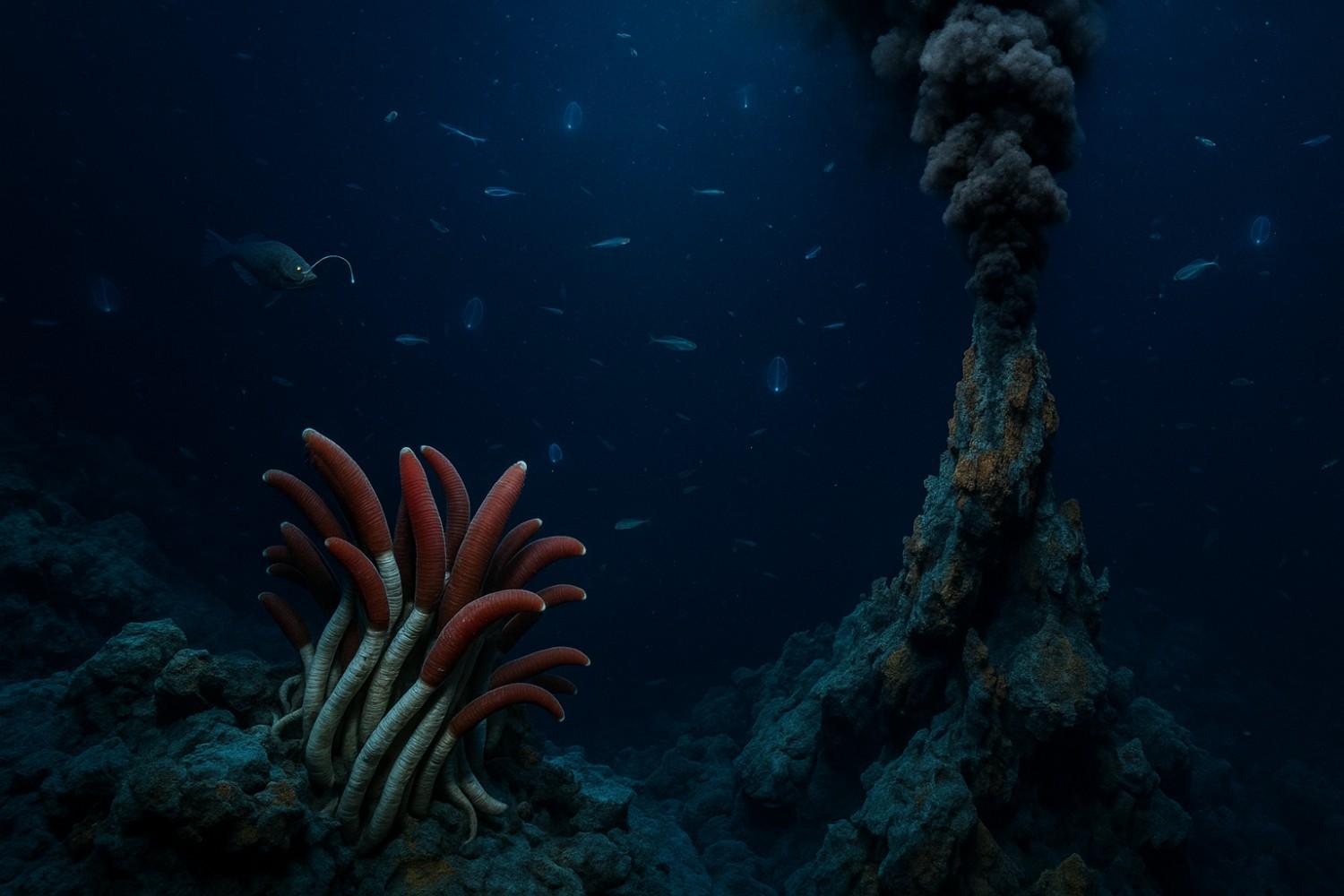Covering over 70% of Earth’s surface, the ocean remains a vast and mysterious realm, holding untold wonders beneath its waves. Despite centuries of exploration, much of the deep blue is still uncharted, concealing breathtaking ecosystems, bizarre life forms, and powerful natural phenomena. Modern technology and scientific breakthroughs continue to reveal the ocean’s secrets, offering glimpses into worlds few have ever seen. Here are fifteen of the most fascinating discoveries and mysteries that illuminate the enigmatic depths of our planet’s oceans.
1. Hydrothermal Vents: Underwater Hot Springs
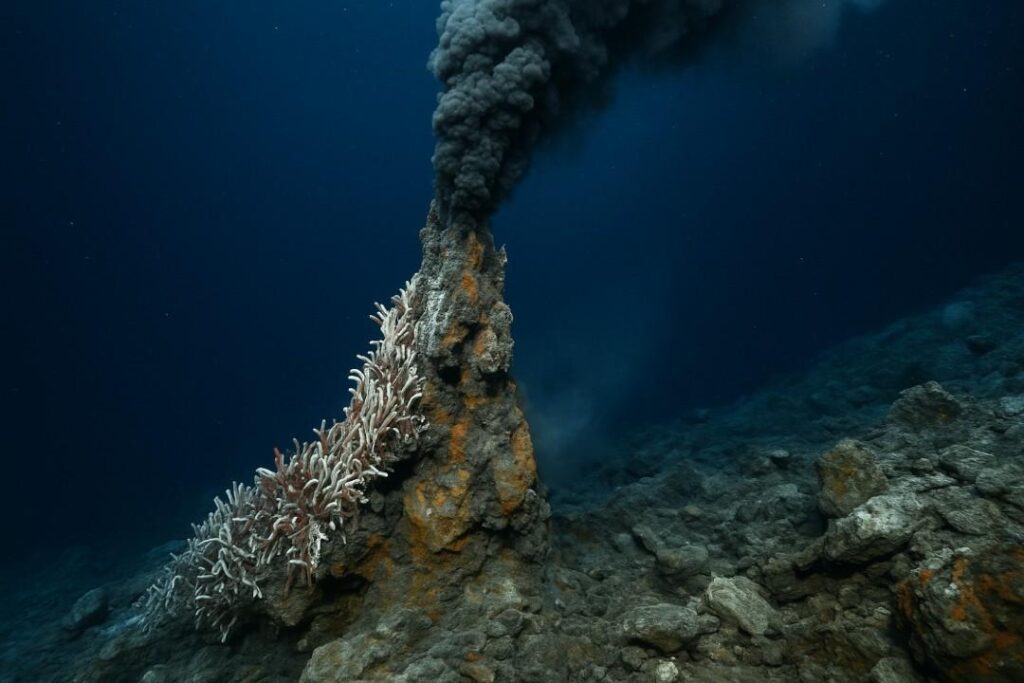
Discovered in the late 1970s, hydrothermal vents are fissures on the ocean floor that release geothermally heated water. Found mainly along mid-ocean ridges, these vents host entire ecosystems that thrive in darkness and extreme heat. Unlike most life on Earth, vent organisms depend on chemosynthesis rather than photosynthesis, using chemicals like hydrogen sulfide for energy. Giant tube worms, blind shrimp, and unique bacteria dominate these environments, showing life’s adaptability and hinting at possible extraterrestrial ecosystems.
2. Bioluminescent Life Forms
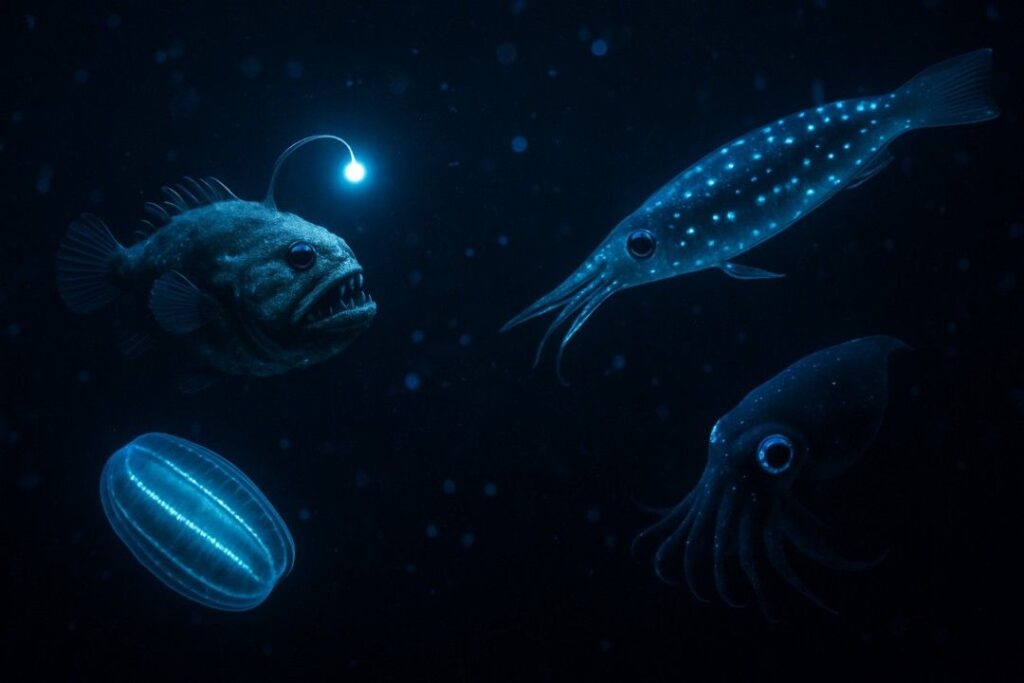
The deep ocean glows with bioluminescence, the natural production of light by living organisms. Creatures such as the anglerfish, comb jellies, and vampire squid use bioluminescence for camouflage, hunting, and communication. These displays range from subtle glimmers to brilliant flashes, often serving as lures or warnings. Scientists study these light shows to understand evolutionary adaptations and inspire innovations in technology and medicine, such as bio-inspired lighting and imaging tools.
3. The Mariana Trench: Earth’s Deepest Point
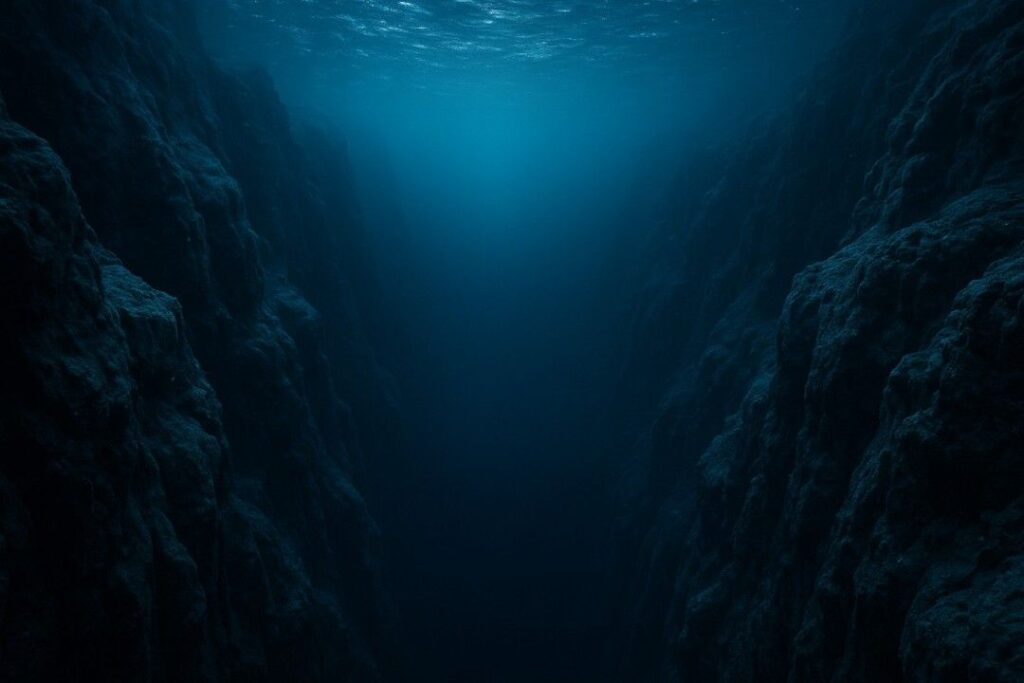
The Mariana Trench plunges nearly 11,000 meters (over 36,000 feet) beneath the Pacific Ocean, making it the planet’s deepest oceanic trench. Its Challenger Deep section is more profound than Mount Everest is tall. Despite the crushing pressure and perpetual darkness, life persists here. Recent explorations have uncovered amphipods, giant single-celled xenophyophores, and even novel bacteria. Studying this trench provides insights into extreme environments and the limits of life on Earth.
4. The Great Ocean Conveyor Belt
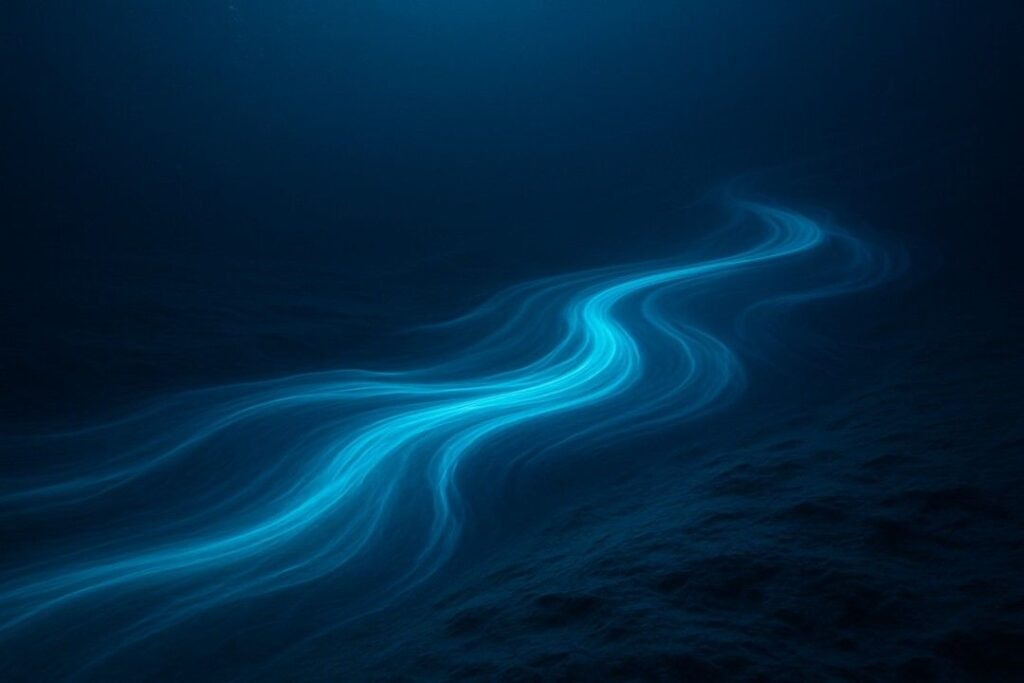
The global ocean circulation system, known as the thermohaline circulation or “Great Ocean Conveyor Belt,” regulates climate and nutrient distribution. Driven by differences in temperature and salinity, this massive system moves water across all the world’s oceans, affecting weather patterns and supporting marine life. Disruptions to this circulation, potentially from climate change, could have dramatic consequences, highlighting the ocean’s critical role in Earth’s stability.
5. Deep-Sea Gigantism
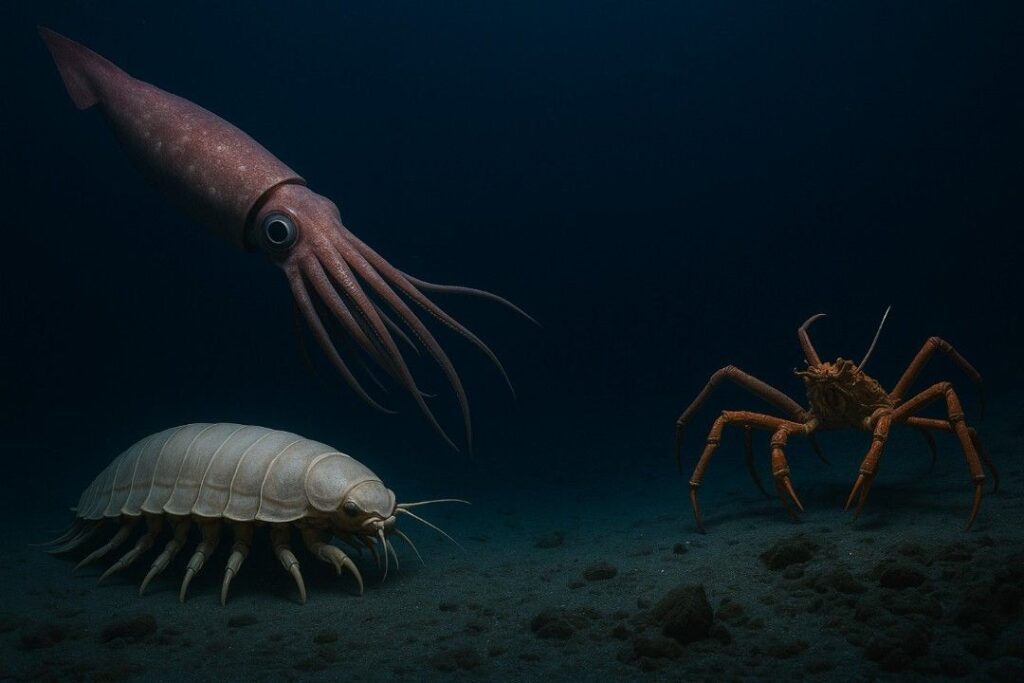
Many deep-sea creatures display “gigantism”—being much larger than their shallow-water counterparts. Examples include the colossal squid, giant isopods, and Japanese spider crabs. Scientists theorize that colder temperatures, higher pressure, and reduced predation in the deep sea allow for such immense sizes. This phenomenon fascinates biologists and continues to challenge our understanding of evolution and adaptation under extreme conditions.
6. Sunken Shipwrecks and Lost Cities
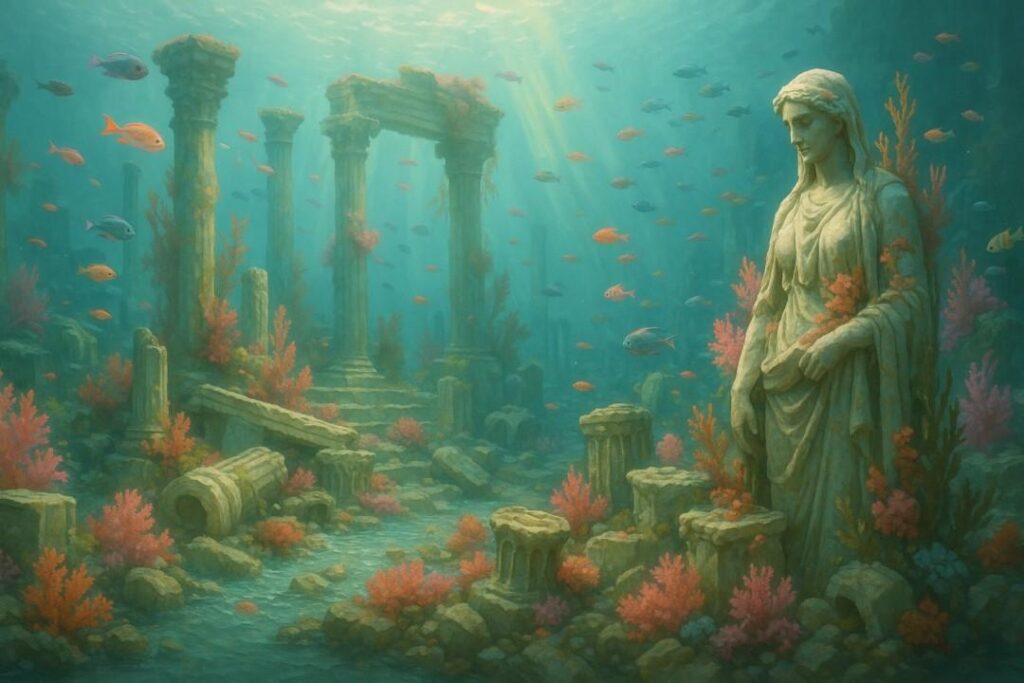
The ocean floor is a graveyard of human history, home to countless shipwrecks and submerged ruins. Iconic examples include the RMS Titanic, ancient Greek ships, and the enigmatic city of Dwarka off India’s coast. These underwater time capsules preserve artifacts and stories of the past, offering archaeologists valuable glimpses into lost civilizations, trade routes, and pivotal historical events.
7. Mysterious Sounds from the Deep

Unexplained noises—like the “Bloop,” “Upsweep,” and “Whistle”—have been recorded in the ocean depths. While some, such as the Bloop, are now attributed to icequakes, others remain enigmatic. These mysterious sounds intrigue researchers, fueling speculation about undiscovered species or unknown geological activity. Advances in underwater acoustics are helping scientists unravel these sonic puzzles and improve marine monitoring.
8. Black Smokers and White Smokers
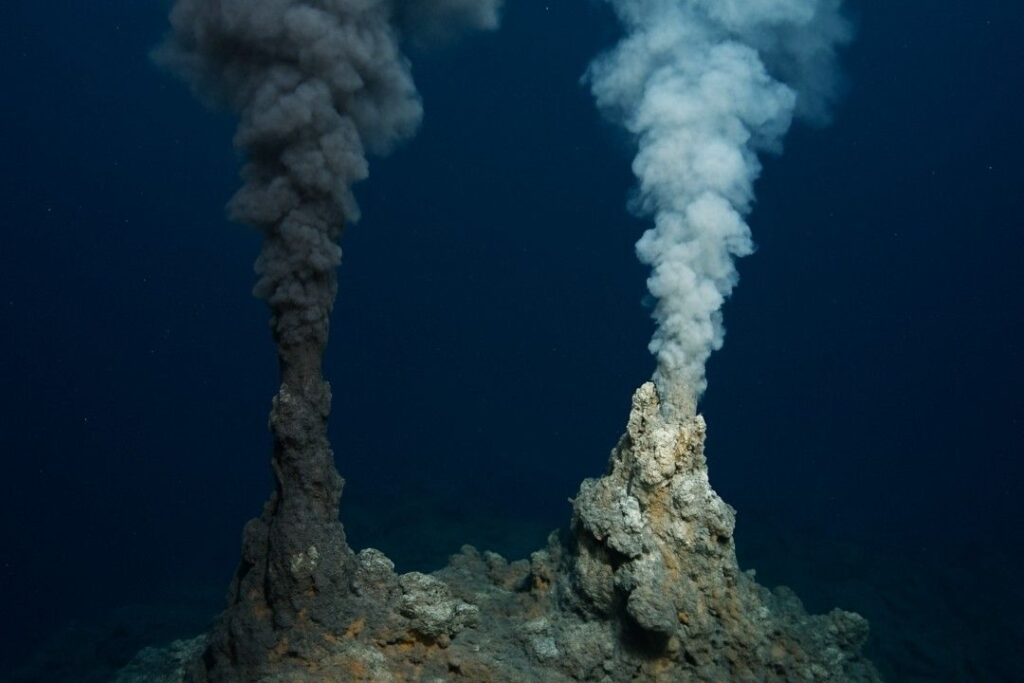
Black smokers and white smokers are types of hydrothermal vents distinguished by the color of their mineral-rich plumes. Black smokers emit dark clouds full of iron and sulfur, while white smokers release lighter-colored fluids rich in barium, calcium, and silicon. Both provide unique habitats teeming with life, including species found nowhere else. Studying these vents sheds light on mineral formation and deep-sea biodiversity.
9. Deep-Ocean Mining
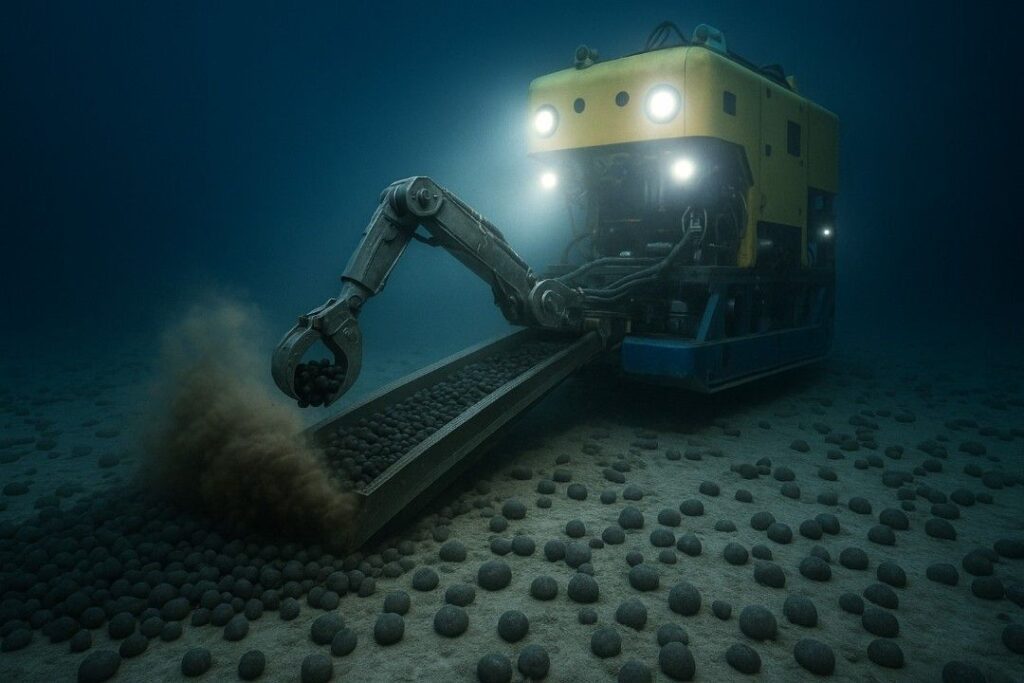
The seafloor contains vast deposits of valuable minerals, such as manganese nodules, cobalt, and rare earth elements. Deep-ocean mining promises access to these resources but poses significant ecological risks. Disturbance of fragile habitats and release of toxic substances could have far-reaching consequences. Ongoing research and debate aim to balance resource extraction with the preservation of deep-sea environments.
10. Chemosynthetic Ecosystems
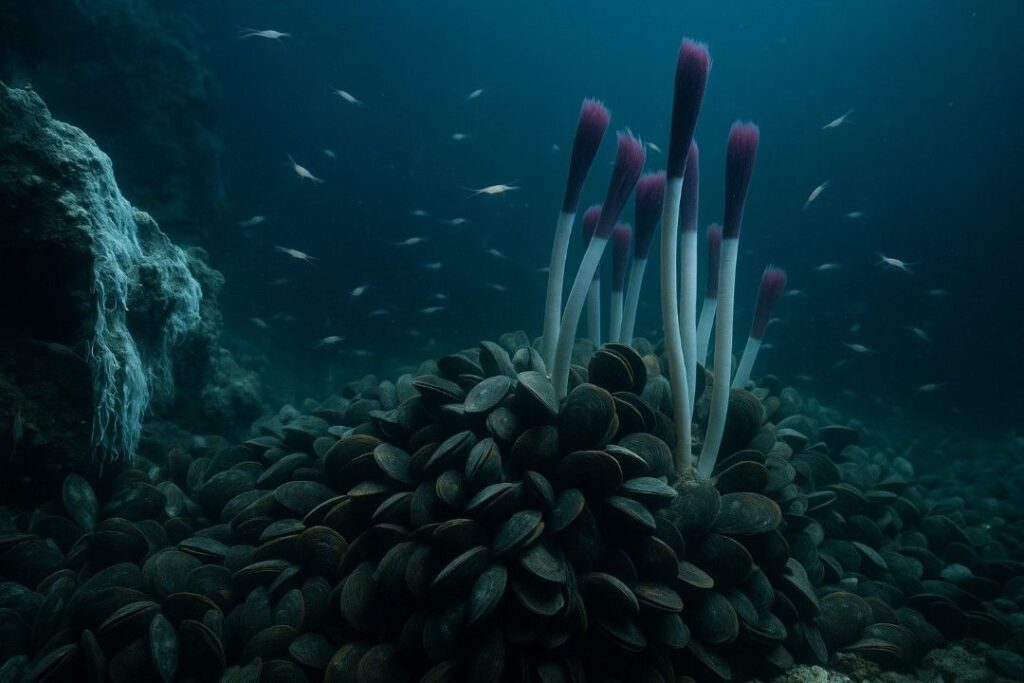
Some of the ocean’s most remarkable life thrives far from sunlight, relying instead on chemosynthesis. In addition to hydrothermal vents, cold seeps—areas where methane and hydrogen sulfide escape the seabed—support unique communities of clams, mussels, and tube worms. These ecosystems challenge traditional ideas about the necessity of sunlight for life and offer analogs for possible extraterrestrial habitats, such as those on Jupiter’s moon Europa.
11. The Twilight Zone (Mesopelagic Zone)
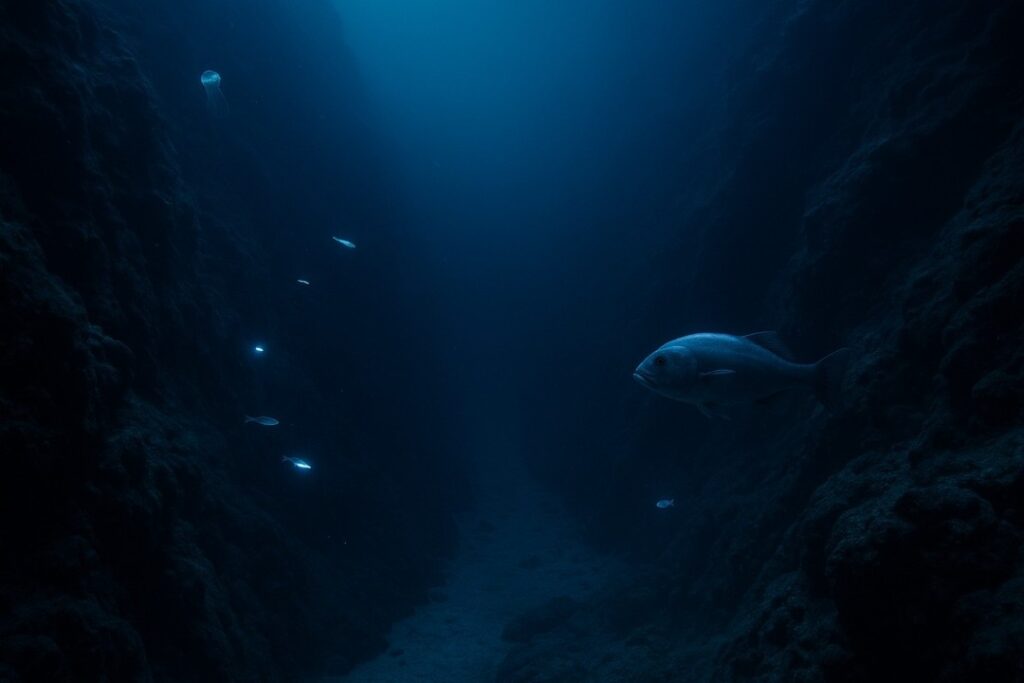
Located between 200 and 1,000 meters below the surface, the mesopelagic or “twilight” zone receives minimal sunlight, creating a world of perpetual dimness. Here, lanternfish, bristle mouths, and squid reign supreme, many with specialized adaptations like large eyes or counter-illumination. This zone plays a vital role in the global carbon cycle as organisms migrate vertically, transporting carbon and nutrients between layers of the ocean.
12. Submarine Canyons
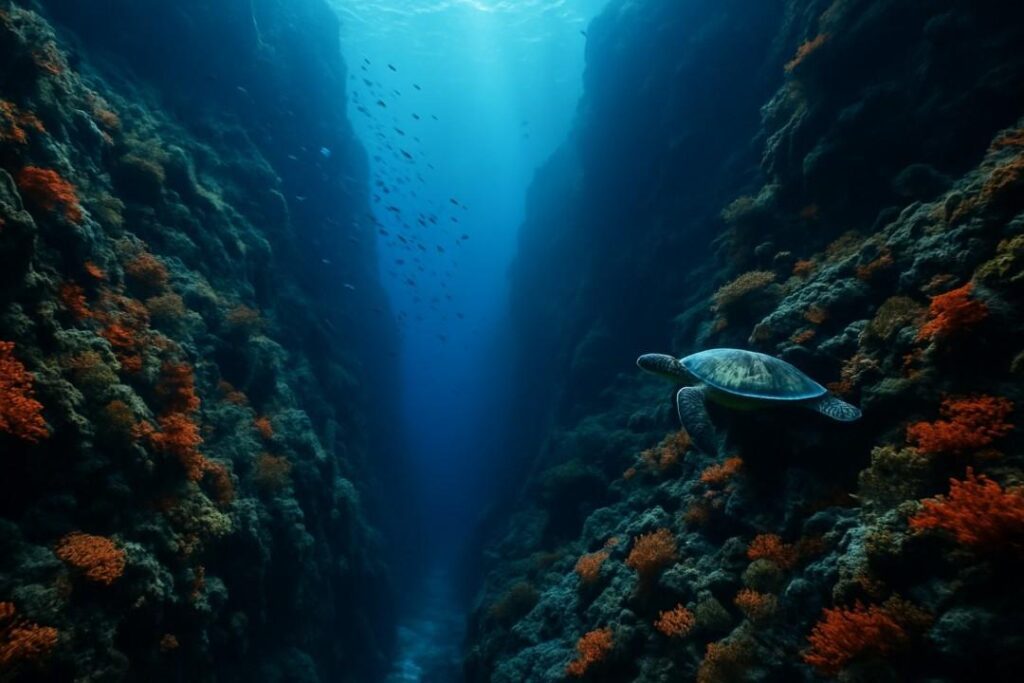
Submarine canyons are steep-sided valleys cut into the seabed, often at the edges of continents. They act as highways for nutrients and sediment, supporting diverse ecosystems. Notable examples include the Monterey Canyon off California and the Zhemchug Canyon in the Bering Sea. Submarine canyons are hotspots for biodiversity, attracting fish, marine mammals, and deep-sea corals.
13. Oceanic Dead Zones
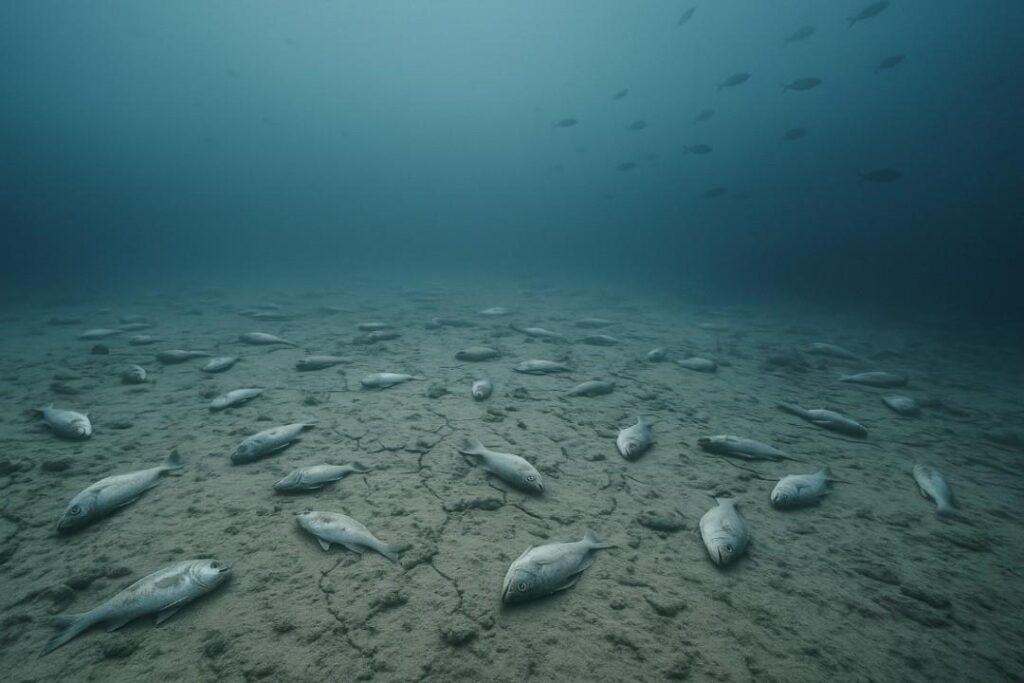
Dead zones are low-oxygen areas where most marine life cannot survive. Often caused by nutrient pollution and algal blooms, these regions have increased dramatically due to human activity. The Gulf of Mexico contains one of the largest seasonal dead zones. Scientists are working to mitigate their expansion through better management of agriculture and wastewater, aiming to protect vital fisheries and ocean health.
14. Deep-Sea Coral Forests
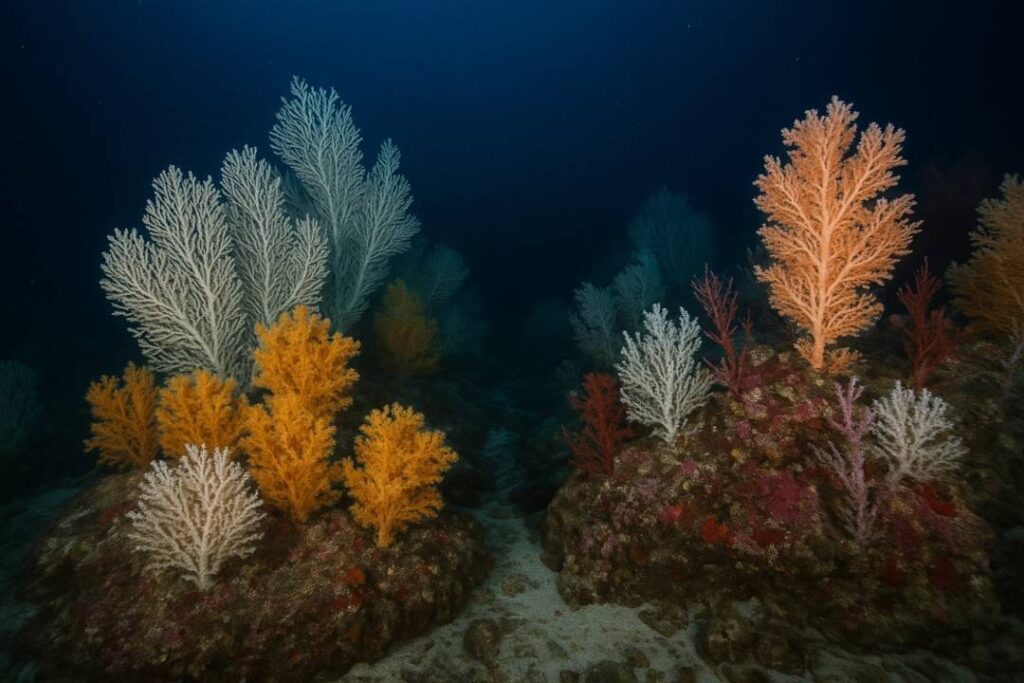
Contrary to popular belief, corals are not exclusive to warm, shallow waters. Deep-sea coral forests exist at depths of over 2,000 meters, forming complex habitats for fish, crustaceans, and other marine species. These corals grow slowly, sometimes living for thousands of years, and are vulnerable to trawling and mining. Preserving these ancient structures is crucial for maintaining deep-sea biodiversity.
15. Uncharted Biodiversity
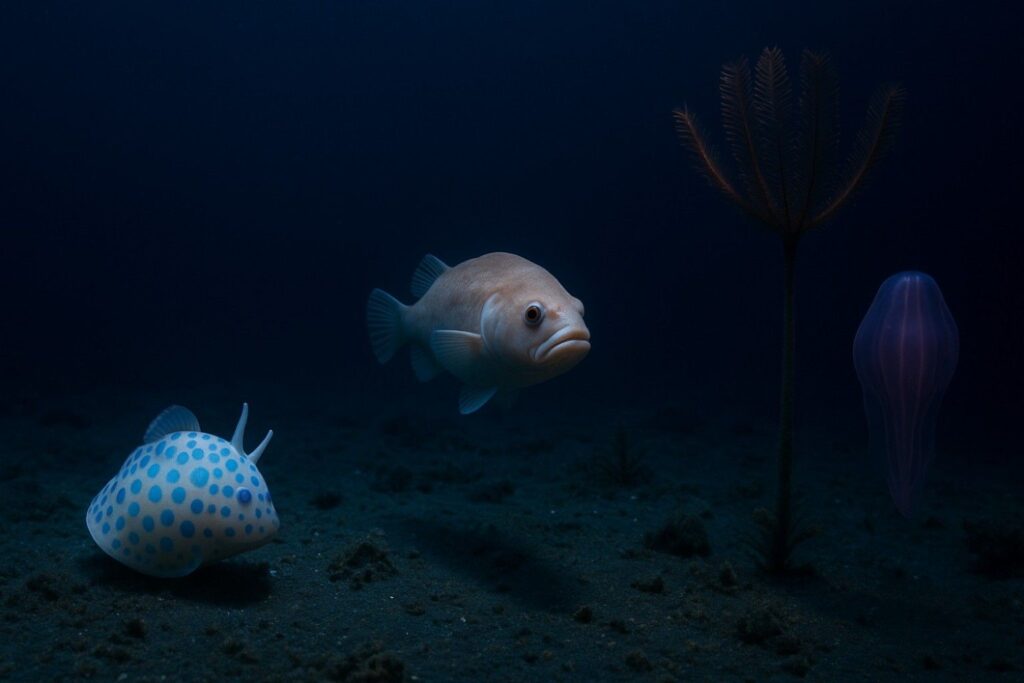
It is estimated that millions of ocean species remain undiscovered, with new life forms found every year. From bizarre fish and invertebrates to microscopic extremophiles, each discovery expands our understanding of evolution and adaptation. Cataloging ocean biodiversity not only enriches science but also holds potential for novel medicines, materials, and technologies inspired by nature’s ingenuity.

